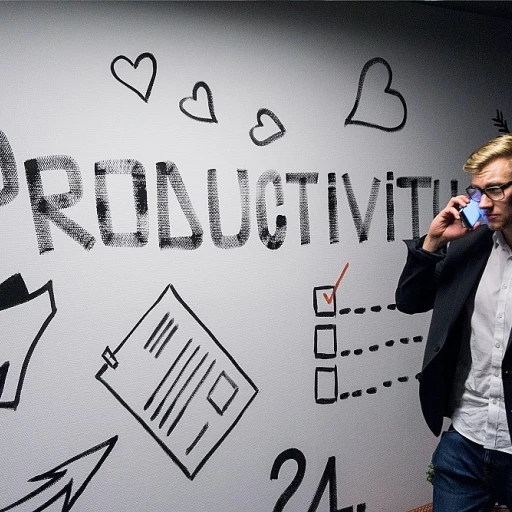Defining RTO: What Does It Mean?
Decoding RTO: What It's All About
The term 'RTO', or Return to Office, has become a significant part of our vocabulary in the post-pandemic work landscape. As organizations navigate the future uncertainties of workplace arrangements, understanding what RTO entails is essential.
Essentially, RTO signifies the transition of employees back to physical office spaces after extended periods of remote work. This shift, driven by various factors including management strategies and safety measures, marks a notable change from the remote work model that had been widely adopted by organizations during the COVID-19 pandemic.
Given the evolving nature of work trends, it's crucial for employees and employers alike to address both their needs and safety concerns. RTO encompasses more than just returning to a desk; it involves reintegrating into the organizational culture while considering protocols for employee safety and the implementation of flexible work models. The office RTO strategy is a nuanced balance between maintaining employee well-being and organizational goals.
Safety protocols are at the forefront of this transition. Companies must prioritize employee safety by implementing measures that foster a secure return and enhance employee engagement. Structuring RTO with flexibility, often through hybrid work models, allows for a seamless integration of remote work elements and pre-pandemic office dynamics.
As we witness these dynamic shifts, expert tips suggest that organizations should maintain clear communication channels and provide resources to support the transition. RTO is not merely a return to the old ways but a step towards embracing the nuances of future work scenarios.
To dive deeper into embracing these changes effectively, consider exploring
embrace the future of work initiatives that outline comprehensive strategies for seamless work transitions.
The Evolution of Remote Work
The Transformation in Work Practices
The term remote work has become a significant part of our vocabulary, especially following the covid pandemic. In the past, most organizations held traditional office environments as the standard work arrangement. However, covid forced a rapid shift towards remote work, challenging established norms and redefining how employees connect and communicate.
With employees setting up office spaces in their homes, the need for digital resources and tools to facilitate virtual communication became crucial. Organizations scrambled to address safety concerns, provide adequate employee support, and redefine their operational strategies.
From classic office setups to home working solutions, there's been a considerable evolution. As covid compelled organizations to prioritize employee safety, many created hybrid work models, allowing flexibility in returning to the office. This hybrid approach has become a cornerstone of workplace flexibility.
The transition towards these flexible work trends has had significant implications. Employees enjoy more autonomy, while organizations have learned to implement protocols safety measures effectively. This evolution in work practices has also prompted companies to reassess their organizational culture, employee well-being, and strategies to maintain employee engagement and productivity.
For a deeper understanding of these changes, you might explore
remote jobs and their unique opportunities. This transformation isn't a return to pre-pandemic times but a step towards future work practices that cater to evolving employee and business needs. As hybrid work becomes more normalized, how will organizations continue to evolve their management and operational tactics?
Benefits and Challenges of RTO
Balancing Benefits and Challenges of Returning to Office
As organizations transition into the return to office (RTO) model, it is essential to understand both the advantages and the hurdles this shift entails. On one hand, returning to the traditional office setting can enhance communication and bolster employee engagement. Being in the same environment fosters spontaneous interactions and collaborations better than being fully remote. Furthermore, employees may experience a rekindling of the pre-pandemic organizational culture.
However, there are challenges that need to be addressed to ensure the success of RTO. Safety measures and protocols must be prioritized to protect employee safety and wellbeing amidst ongoing concerns related to COVID. Providing resources such as expert tips on maintaining hygiene, as well as clear communication regarding safety protocols, is vital.
Hybrid work arrangements have emerged as a middle ground to capture the benefits of both remote and in-office work. This model can support work-life balance while respecting individual employee needs and preferences. Employers may initially implement a few days of office work, allowing employees to gradually adapt to the new routine.
It's also important to recognize that flexibility remains a key factor in future work trends. Some team members may prefer the remote setup either all the time or occasionally, based on their personal circumstances and job roles. Encouraging a flexible work culture can lead to improved employee well-being, satisfaction, and productivity without compromising on company objectives.
For more insights into work arrangements and trends post-pandemic, explore
opportunities in remote work across Ireland.
Hybrid Work Models: A Middle Ground
Striking a Balance with Work Arrangements
The evolution of remote work has paved the way for innovative work models, prominently featuring the hybrid approach. This model caters to the diverse needs of both employees and organizations by merging the benefits of office-based and remote work. It allows for strategic planning where specific days are allocated for remote work and others for being physically present at the office.
Hybrid work arrangements offer a compromise, addressing employee well-being while bolstering employee engagement. These models can be particularly effective in addressing the need for flexibility and ensuring employee safety during the transition back to the office post-pandemic. With safety measures and protocols at the forefront, organizations can create an environment where employees feel secure, aiding in the gradual return to office (RTO) and providing peace of mind.
Organizations have harnessed hybrid work models to maintain productivity without sacrificing the organizational culture that many feared would dissipate with full remote work. Expert tips suggest maintaining open lines of communication to manage expectations and address any issues that arise. This approach helps management collaborate effectively with their team, ensuring that objectives align with both business needs and employee motivations.
The hybrid model also addresses many logistical and safety concerns, such as crowd density and privacy policy compliance, by minimizing the number of employees physically present each day. This makes it possible for employees to enjoy a balance between their professional and personal lives, enhancing work-life balance.
By adapting to the changing work trends, hybrid work arrangements act as a practical method to navigate the future work landscape, providing both resources and flexibility to foster an environment conducive to achieving the elusive balance between remote work and office RTO.
Impact of RTO on Work-Life Balance
Balancing Work-Life Harmony in the New RTO Landscape
Understanding the impact of return-to-office (RTO) protocols on work-life balance is crucial for both employees and organizations navigating this transition. Before the pandemic, office-based work was the norm, with set hours and a clear division between professional and personal time. However, the pandemic-induced shift to remote work blurred these boundaries. Now, as organizations explore RTO strategies, they're tasked with addressing the intricate balance between professional responsibilities and personal well-being.
One major concern among employees is the loss of flexibility that remote work provided. Many have grown accustomed to managing their schedules, which allowed them to handle both professional tasks and personal commitments more efficiently. As a result, the return to a fixed office schedule can feel restrictive, potentially leading to stress and reduced employee well-being. Organizations need to consider hybrid work models that maintain some of the flexibility employees appreciated.
Key Considerations for Organizations:- Safety Measures: Implementing robust safety protocols is essential to alleviate concerns about returning to the office. This doesn't just pertain to health protocols but also includes emotional and psychological safety, ensuring employees feel supported during this transition.
- Hybrid Work Opportunities: Offering hybrid work arrangements can be an effective middle ground. By allowing employees to choose remote work on certain days, organizations can enhance employee safety and work-life balance while maintaining office engagement.
- Communication and Flexibility: Open communication between management and employees is key. Addressing individual needs and concerns, understanding remote and hybrid work preferences, and collectively developing solutions can foster a positive organizational culture.
- Resource Allocation: Providing adequate resources for both in-office and remote work scenarios ensures that employees remain productive and engaged, no matter where they are working.
Employees returning to office environments should be prepared to adapt to evolving work trends, balancing different modes of communication, and maintaining productivity in both office and remote contexts. As organizations move forward, the focus should remain on flexibility and employee well-being, ensuring that the future work arrangements align with both business goals and personal needs.
Future Trends in Workplace Flexibility
Embracing Flexibility and Change
As businesses transition to embrace the dynamics of the workplace, flexibility remains a cornerstone for many organizations. The return to office (RTO) strategies post-pandemic have had to adapt, offering employees a variety of work arrangements tailored to their needs and preferences.
Adapting to new work trends has involved careful consideration of employee engagement and safety measures. Many organizations have found value in hybrid models, which blend the benefits of both remote and in-office environments. This approach helps address employee well-being while balancing the demands of organizational culture.
The Role of Technology and Communication
In the realm of RTO return, effective communication serves as a critical factor. Developing clear protocols and privacy policies ensures that everyone is on the same page, safeguarding both employee safety and productivity. Advances in technology continue to support seamless communication, enabling teams to collaborate efficiently regardless of their physical locations.
A key consideration for management is providing adequate resources and tools for employees to perform their tasks efficiently, whether they are working remotely or in the office. Ensuring that safety measures and expert tips are disseminated correctly is crucial in maintaining an optimal work environment.
Future Work Environments
Looking forward, the future work landscape is likely to further integrate flexible work arrangements. It's important to continue evaluating the balance between office days and remote work, as organizations strive to nurture their workforce’s growth and satisfaction. Work-life balance remains a top priority, and innovative solutions continue to emerge, shaping the future of office RTO strategies.
As the work environment continues to evolve, staying updated with current trends and expert insights can empower both employers and employees to navigate these changes adeptly. For more information, our blog frequently covers emerging work trends and offers resources to foster effective work arrangements.













